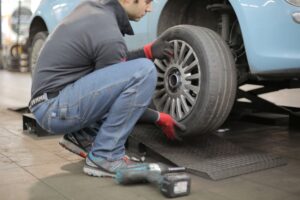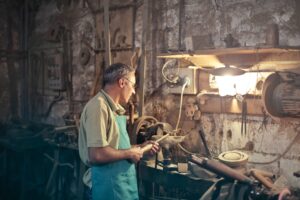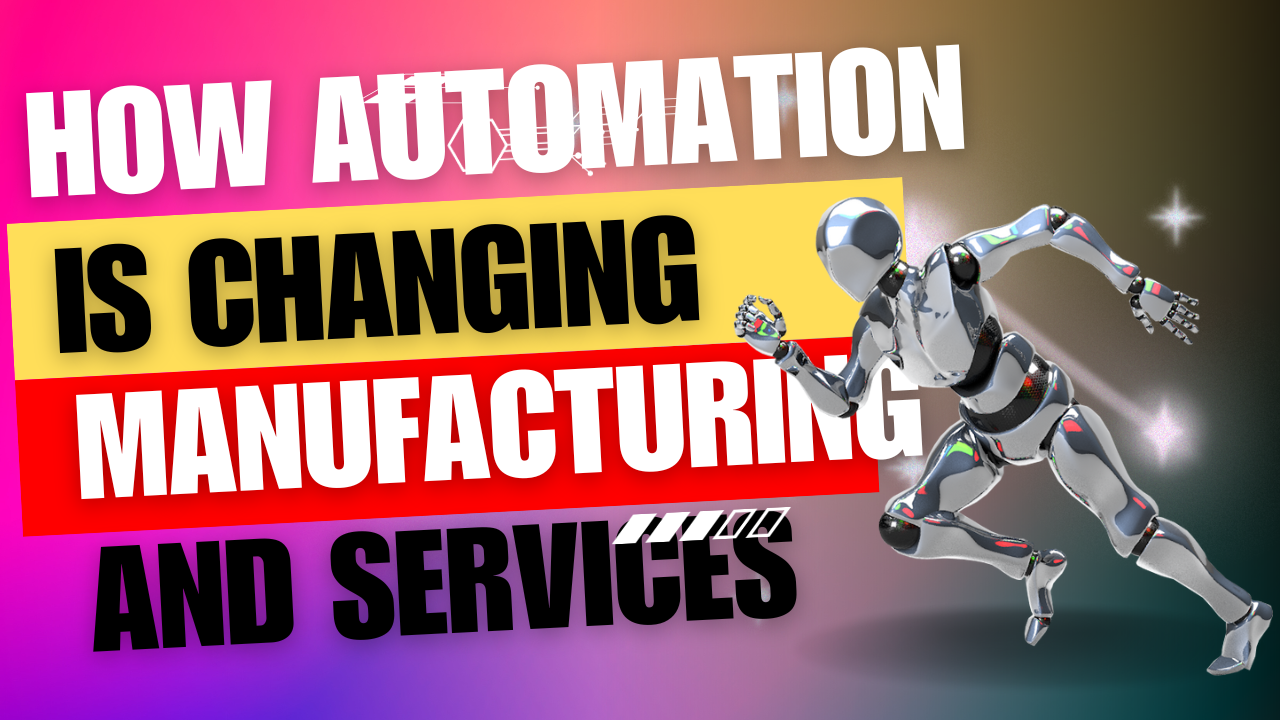Introduction
In a world where time is money, robots are like the superstars of efficiency. They’re taking over tasks, speeding things up, and changing the game in industries around the globe. It’s not science fiction; it’s a reality show where automation is the star. Let’s jump in and see what’s happening!
Section 1: Robots in Manufacturing
1.1 Rise of the Machines
The rise of machines in factories indeed represents a profound transformation in industrial processes. What was once a scene bustling with human activity has now become a choreographed dance of precision, with robots taking centerstage.
In these modern factories, robots work tirelessly, carrying out tasks with programmed precision. Their movements are synchronized to perfection, ensuring efficiency and accuracy in production. It’s a well-orchestrated performance, where every move is designed to optimize productivity, reduce errors, and enhance overall quality.
This shift towards automation has not only revolutionized manufacturing but also raised questions about the future of work and the role of humans in this evolving landscape. While robots excel in repetitive and precise tasks, humans bring creativity, problem-solving skills, and adaptability to the table. The challenge lies in finding a harmonious balance between the two, where humans and machines complement each other to create a more efficient and sustainable future.
So, in the dance of industry, robots are the new stars, showcasing the power of automation and precision. It’s a testament to our ability to innovate and adapt to the changing dynamics of the modern world.

1.2 What Can Robots Do?
Robots boast versatility across various tasks, ranging from welding to packing and beyond. They embody the essence of a jack-of-all-trades, adeptly handling diverse assignments with their mechanical precision. No matter the job, robots tackle it with a mechanical efficiency that mirrors a confident smile. Their adaptability and reliability make them indispensable across industries, effortlessly navigating through tasks that span from intricate manufacturing processes to mundane, repetitive operations, streamlining workflows and augmenting human capabilities in numerous fields.
1.3 Benefits of Automation in Manufacturing
The benefits of automation in manufacturing are indeed akin to hitting the efficiency jackpot. Automation, often powered by robots and advanced machinery, offers a range of advantages that significantly enhance the production process:
- Accuracy: Robots can perform tasks with pinpoint accuracy, reducing the margin of error to almost zero. This leads to higher product quality and fewer defects.
- Speed: Automation allows for continuous, high-speed production without the need for breaks or rest. This results in increased output and faster time-to-market for products.
- Consistency: Robots follow precise instructions consistently, ensuring that each product meets the same quality standards. This consistency is challenging to achieve with human labor alone.
- Efficiency: Automated systems can operate 24/7, maximizing production efficiency and reducing downtime. This leads to cost savings and increased productivity.
- Safety: Robots can handle dangerous or repetitive tasks that may pose risks to human workers. This improves workplace safety and reduces the number of workplace accidents.
- Cost Reduction: While initial setup costs can be significant, automation often leads to long-term cost savings due to reduced labor expenses, decreased waste, and improved resource utilization.
- Flexibility: Modern automation systems can be reprogrammed and reconfigured to adapt to changing production requirements, providing greater flexibility in manufacturing processes.
- Data Collection: Automation systems can collect and analyze data in real-time, providing valuable insights into production efficiency, allowing for proactive maintenance, and facilitating continuous process improvement.
- Competitive Advantage: Companies that embrace automation often gain a competitive edge by producing high-quality products at lower costs, which can lead to increased market share and profitability.
While robots may not need coffee breaks, they are tools that augment human capabilities rather than replace them. In the modern manufacturing landscape, the synergy between automation and human expertise is key to unlocking the full potential of efficiency and innovation.
Section 2: Robots in Services

2.1 Customer Service Bots
Customer service bots have indeed become invaluable assets for businesses and customers alike. Their round-the-clock availability and prompt responses are transforming the customer support landscape in several ways:
- Availability: Customer service bots are always ready to assist, ensuring that customers can seek help and information at any time, even outside regular business hours.
- Efficiency: Bots can handle routine and frequently asked questions swiftly and accurately, freeing up human agents to focus on more complex issues that require empathy and creativity.
- Consistency: Bots provide consistent responses and information, reducing the chances of human error or variations in support quality.
- Quick Issue Resolution: They can help customers troubleshoot problems or guide them through processes, often leading to faster issue resolution.
- Scalability: Bots can handle a large volume of customer inquiries simultaneously, making them well-suited for businesses with high customer interaction rates.
- Data Insights: Customer service bots can collect and analyze data on customer interactions, providing valuable insights into customer preferences and pain points.
- Cost Savings: Deploying bots can lead to cost savings for businesses by reducing the need for a large human customer support team.
While customer service bots are incredibly useful, it’s important to strike a balance between automation and the human touch. Some complex issues may still require the empathy, problem-solving skills, and understanding that only human agents can provide. Therefore, the optimal customer service experience often combines the efficiency of bots with the human touch of skilled customer support representatives.
2.2 Healthcare Robotics
In healthcare settings, robotics serve diverse roles—from aiding in surgeries to assisting with deliveries within hospitals. These mechanical helpers act as guardian angels equipped with circuits. They bring precision and support to medical procedures, enhancing the capabilities of healthcare professionals and contributing to more efficient and precise treatments. Whether assisting in surgeries or delivering essential supplies, these robotic aides play a pivotal role, offering support and contributing to the well-being of patients while advancing the efficiency of healthcare services.
2.3 Robotic Chefs and Waiters
The emergence of robotic chefs and waiters is indeed a taste of the future of dining, where technology meets culinary innovation to create unique and delightful experiences.

Robotic Chefs:
- These culinary robots are programmed to prepare and cook food with precision and consistency.
- They excel in tasks that require repetitive actions, such as chopping, stirring, and flipping, ensuring that each dish is prepared to perfection.
- Robotic chefs are not just about efficiency; they can also explore new cooking techniques and create novel recipes that challenge traditional culinary boundaries.
Robotic Waiters:
- These friendly automatons take on the role of serving food and beverages to diners, providing a unique and futuristic dining experience.
- They can navigate restaurant spaces, deliver orders to tables, and even engage in simple interactions with customers.
- Robotic waiters enhance efficiency in busy restaurants by reducing waiting times and minimizing errors in order delivery.
These advancements in robotics are not only reshaping the restaurant industry but also expanding culinary possibilities. They allow for creative experimentation in the kitchen and create memorable dining experiences that bridge the gap between tradition and innovation.
So, when you dine in a restaurant with robotic chefs and waiters, you’re not just enjoying a delicious meal – you’re also savoring a taste of the future.
Section 3: Challenges and Ethical Considerations
3.1 Job Displacement
The ascent of robots often accompanies the decline of certain jobs, creating a seesaw effect in the workforce. Achieving equilibrium requires balance, where training and adaptation serve as pivotal keys for a smoother transition. As automation evolves, it’s crucial to equip the workforce with skills that align with emerging demands. Facilitating training programs and fostering adaptability becomes essential to navigate this changing landscape, ensuring that as some roles diminish, new opportunities emerge, enabling individuals to thrive in a transformed job market. It’s a dynamic shift that necessitates proactive measures to bridge the gap and foster a sustainable transition for the workforce.
3.2 Safety and Reliability
You’re absolutely right; robots, like any mechanical systems, are not infallible and can experience breakdowns or malfunctions. Ensuring their safety and reliability is paramount, and it’s akin to having a watchdog for your watchdog.
To maintain the safety and reliability of robots, a combination of preventive measures and monitoring is essential. This includes regular maintenance, inspections, and quality control checks to detect and address potential issues before they lead to failures.
Additionally, advancements in robotics are incorporating features such as redundancy and fail-safes to enhance reliability. Redundancy involves having backup systems or components in place so that if one fails, another can take over to prevent accidents or disruptions. Fail-safes are protocols or mechanisms that ensure a safe response in the event of a malfunction.
Moreover, human oversight plays a critical role in ensuring the safe operation of robots. Human operators and technicians are responsible for monitoring robot performance, responding to alerts, and taking appropriate action when needed. This oversight helps maintain the delicate balance between the capabilities of robots and the need for human intervention when the unexpected occurs.
In essence, while robots offer incredible benefits in terms of efficiency and productivity, safeguarding their safety and reliability is a continuous process. It’s like having a vigilant watchdog for your mechanical companions, ensuring that they serve their intended purpose without compromising the well-being of people or the smooth operation of processes.
3.3 Ethical Dilemmas
The notion of robots caring for the elderly poses complex ethical quandaries, lacking straightforward solutions. Navigating the ethical landscape in robotics resembles traversing a tightrope—requiring delicate balance and cautious steps. It’s a terrain where questions about empathy, consent, and human connection intersect with technological advancements. As we integrate robots into caregiving roles, it demands thoughtful consideration of ethical implications, ensuring that while technology enhances care, it doesn’t compromise the essential human elements of compassion and understanding. It’s a journey that calls for a steady approach, weighing the benefits of innovation against the preservation of human dignity and values.
Section 4: The Future of Robotics in Industry
4.1 Collaborative Robots
Collaborative robots, often referred to as cobots, represent a harmonious fusion of human expertise and technological innovation. They embody the idea of teamwork in the most high-tech way possible, creating a future that is not just collaborative but also incredibly efficient and versatile, like a high-tech huddle in the world of automation.
Here’s how cobots are shaping the future:
- Workplace Harmony: Cobots are designed to work alongside humans, assisting with tasks that require precision and strength. They promote a harmonious coexistence between human workers and automation, fostering a positive work environment.
- Enhanced Productivity: The synergy between humans and cobots leads to increased productivity. Cobots handle repetitive or physically demanding tasks, allowing human workers to focus on more complex, creative, and value-added activities.
- Safety: Collaborative robots are equipped with sensors and safety features that enable them to detect and respond to the presence of humans. This ensures a safe working environment where accidents are minimized.
- Versatility: Cobots are highly adaptable and can be reprogrammed for different tasks quickly. This versatility makes them valuable assets in industries ranging from manufacturing and healthcare to logistics and agriculture.
- Efficiency: By leveraging the strengths of both humans and cobots, businesses can achieve higher levels of efficiency, reduce errors, and maintain quality standards consistently.
- Skill Enhancement: Cobots offer opportunities for workers to learn how to operate and interact with advanced technology, enhancing their skillsets and employability.
In the grand scheme of automation, collaborative robots exemplify the future of work—a future where technology complements human capabilities and where teamwork between humans and machines drives innovation and progress. It’s a technological huddle that brings out the best in both worlds.
4.2 AI and Machine Learning
AI and machine learning enable robots to learn dynamically while performing tasks—an ongoing evolution akin to having an apprentice that perpetually expands their skills. These technologies empower robots to adapt, refine, and enhance their performance based on experience and data. Just like an apprentice constantly acquiring new knowledge, these learning algorithms enable robots to evolve and improve their capabilities over time. It’s a continuous learning process that fuels their ability to tackle diverse challenges and elevate their proficiency without ceasing.
4.3 Sustainability
The rise of green robots is indeed a powerful step towards sustainability in technology. These eco-conscious machines play a vital role in conserving energy, reducing waste, and promoting responsible resource management. They’re like eco-warriors on your team, contributing to a more environmentally friendly and sustainable future.

Here’s how green robots are making a positive impact:
- Energy Efficiency: Green robots are designed to consume less energy during operation, minimizing their carbon footprint and reducing overall energy consumption.
- Renewable Energy Integration: Some robots are powered by renewable energy sources such as solar panels, further reducing their environmental impact and dependence on fossil fuels.
- Recycling and Sustainable Materials: In their construction and design, green robots prioritize the use of recycled and sustainable materials, reducing waste and promoting a circular economy.
- Reduced Emissions: By optimizing operations and reducing energy consumption, green robots emit fewer greenhouse gases, contributing to lower emissions and a cleaner environment.
- Environmental Monitoring: Some robots are used for environmental monitoring and conservation efforts, helping scientists and researchers gather data to address environmental challenges.
- Precision Agriculture: In agriculture, green robots are used for precision farming, which minimizes the use of pesticides and fertilizers while maximizing crop yields and sustainability.
- Waste Reduction: In manufacturing and logistics, robots are used to optimize packaging and reduce material waste, contributing to more sustainable supply chain practices.
The adoption of green robots aligns with the broader goal of achieving sustainability in technology and industry. By incorporating eco-friendly practices and technologies into robotics, we can mitigate environmental impact and move closer to a future where technology coexists harmoniously with nature.
FAQ’s
- Q: Will robots take all our jobs? A: Not likely. It’s like using a fork instead of fingers. Tools change, jobs evolve, and there’s always room for human touch.
- Q: Are robots safe to work with? A: With the right precautions, absolutely. It’s like driving a car; follow the rules, and you’re good to go.
- Q: What industries will see the most impact? A: From healthcare to hospitality, robots are popping up like daisies in spring. Keep an eye out; they’re coming to an industry near you.
Conclusion
Robots in the industry aren’t like cold, unfeeling machines. They’re more like partners, tools, and innovations that are shaping a new era in manufacturing and services.
It’s an exciting time, full of potential and promise, like standing on the edge of a new frontier. Sure, there are challenges, but there’s also adventure, innovation, and growth.
So here’s to the robots, the engineers, the dreamers, and the doers. Together, they’re weaving a new tapestry, where technology and humanity intertwine, like a dance that’s just beginning.
The future is calling, and it’s automated, efficient, and full of robotic charm. Ready to join the revolution?

